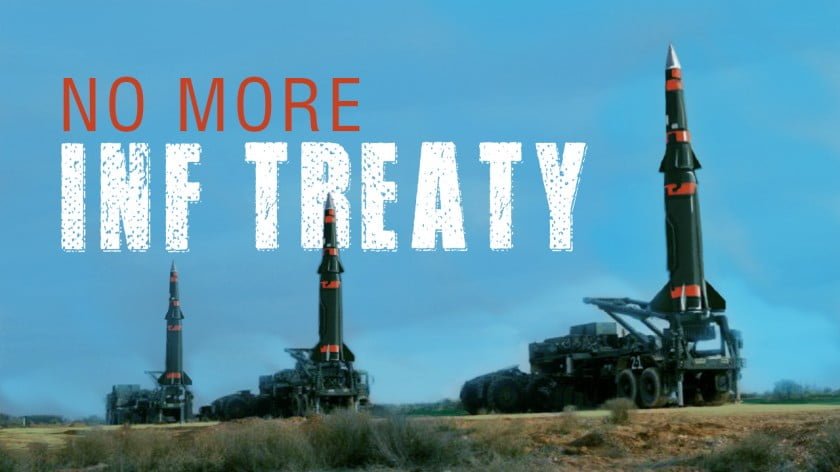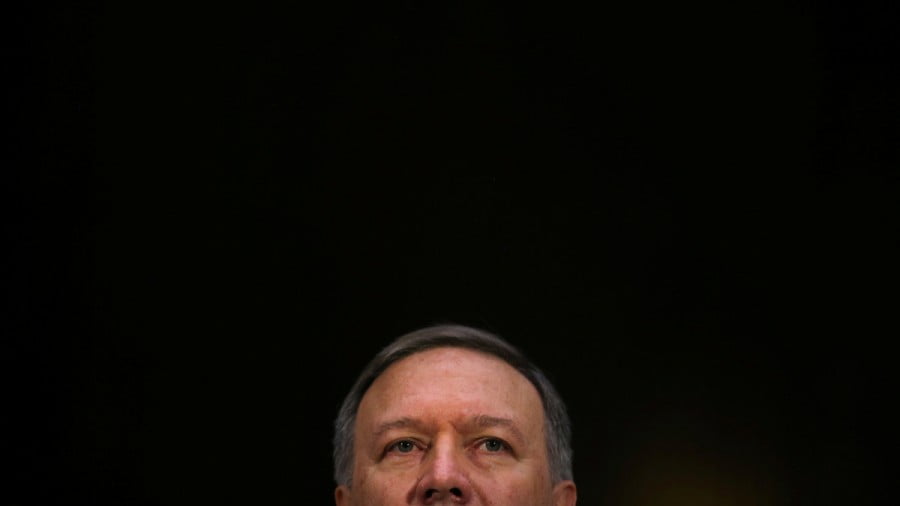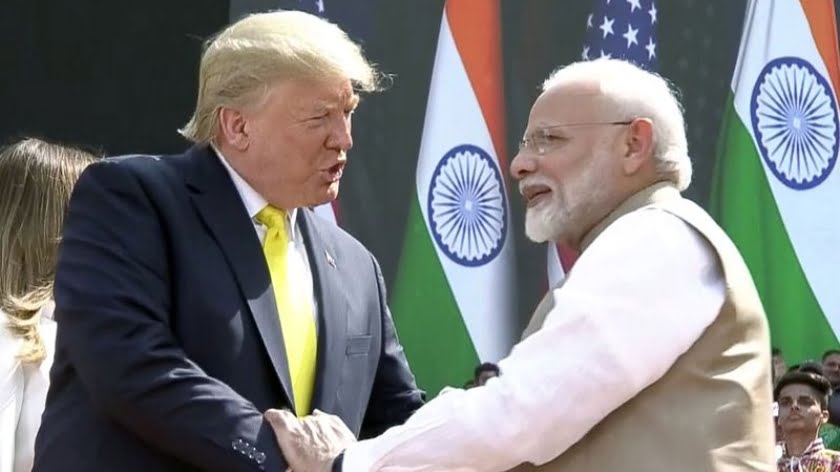Reasons Behind U.S. Initiative to Terminate INF Treaty
For nearly 30 years, the Intermediate-Range Nuclear Forces Treaty (INF) has been one of the cornerstones of the international security system, however; beginning from 2013-2014, during the administration of President Obama, the United States started to accuse Russia of violating the INF. Washington claimed that between 2008 and 2011, a ground-based cruise missile was tested at the Kapustin Yar test site (Astrakhan region) that achieved a range greater than 500 km which is prohibited under the Treaty. Between 2017 and 2018, Washington and the NATO leadership continued to accuse Russia of violating the INF. US Secretary of Defense Jim Mattis and the Permanent US Representative to NATO Kay Bailey Hutchison have stated that Moscow has a new 9M729 missile, describing it as a land-based version of the Kalibr submarine launched, medium-range missile. Such a missile would violate the terms of the treaty. No conclusive evidence was provided by the American side.
The White House National Security Adviser John Bolton is also a longtime supporter as well as initiator of the idea of withdrawal from the agreement. He has repeatedly said that the bilateral nature of the treaty is its disadvantage. In his opinion, the INF Treaty is limiting the ability of Moscow and Washington to strengthen their potential, while the threat of building up weapons of this type is increasing from third parties – in particular from China and Iran. The main reason, according to the United States, for the withdrawal from the INF is the strengthening of the Chinese nuclear potential, as well as the emergence of new types of intermediate and shorter range missiles in its arsenal. Therefore, the United States’ decision to withdraw from the treaty is not so much due to the fact that there is any evidence of Russia having prohibited missiles, but rather because China is increasing its capabilities in intermediate and shorter-range missiles. As a result of this reality, the United States feels limited in its ability to counter such a military threat.
However, these reasons are largely just formal. The underlying reasons to withdraw from the contract are different.
What is really behind the termination of the INF?
The U.S. Armed Forces have held the dominant position on the planet for the past 25 years. The absence of an equal opponent has led to the U.S. Army and Navy’s complacency and relaxation, and if these negative tendencies are not stopped, they will also lead to a degrading of readiness and capability. The U.S. military-industrial complex (MIC) fired its last nuclear warhead in 1991. The last U.S. ground-based intercontinental ballistic missile was commissioned in 1986, and then their production was discontinued. The production of the Trident II (D5) SLBM (submarine-launched ballistic missile) was discontinued in 2010. In order to eliminate the scientific and technical gap in the field of nuclear missile weapons, the US Department of Defense adopted the NPR (Nuclear Posture Review) program in 2018, the implementation of which requires 400 billion dollars. In this regard, the main reason for the US withdrawal from the INF Treaty can be considered President Trump’s attempt to saturate the domestic military-industrial complex with money, launch new weapons designs and then, of course, sell these weapons. Thus, the question arises, other than the U.S. military, who will buy such weapons? Only those nations who have small militaries, or weapons systems that are too old and under threat of actual physical destruction. Trump has repeatedly stated that NATO countries spend too little on their defense contributions to the organization. But in order to force European countries to buy American weapons, the usual anti-Russia and Iran rhetoric will not work. More radical means are needed to this end, such as coercion, manipulation and threats. The most sophisticated of these methods was a statement regarding the withdrawal of the United States from the Treaty. In such a case, European countries will be forced to buy US air defense/missile defense systems and spend astounding amounts of money that will finance the US military-industrial complex. The accusations against Russia are used as a pretext for the United States to save face on the international stage.
The nature of the claims by both parties and what Russia and the US will undertake in terms of arms development
The Russian claims are not unfounded and concern the deployment of weapons in Europe which is in one way or another a likely violation of the INF. These include combat unmanned aerial vehicles (UAVs), which, due to a combination of characteristics, can carry or are themselves intermediate-range missiles. Of similar concern is the transfer of the Mk-41 launchers of the ship-based CICS (combat information and control system) Aegis from ships to land-based facilities (the Aegis Ashore program). In Romania, the Aegis Ashore facility is based at the Debeselu air base (3 batteries with 8 SM-3 Block IB missiles) and in Poland a second installation is currently under construction at the village of Redzikovo. These launchers are not only platforms for SM-3 anti-ballistic missiles, but also potentially for Tomahawk land attack cruise missiles. The positioning of these intermediate range missiles on land is forbidden under the INF Treaty. In addition, a number of Russian military experts have expressed concern over the development of the United States X-51A Waverider Hypersonic Cruise Missile. This hypersonic missile is not subject to the INF Treaty, but it has the characteristics of a shorter-range cruise missile. Furthermore, the United States is actually violating the INF when it tests its anti-ballistic missile systems. In order to test missile defense systems, intermediate- and shorter-range mock missiles are used for the Hera, MRT, Aries, LV-2, Storm, Storm-2, and MRBM complexes.
In turn, the US claims are based on the assertion that the Russian Federation understates the officially disclosed characteristics of the missiles under development and currently equips the OTMS Iskander (operational tactical missile system) with modified intermediate-range sea-based Kalibr missiles.
Either way, both nations have developed and are developing intermediate and short range missiles in one way or another. Therefore, in the event of termination of the treaty, both the United States and the Russian Federation will be able to fully continue developing missiles as mentioned above, and commission them into active use. The withdrawal from the treaty itself will unleash a new arms race similar to that experienced in the 1980s.
What are the consequences for the two parties if they withdraw from the contract? With the release of the Russian Federation and the United States from the INF Treaty, the START-3 treaty loses its meaning, and as a result, the entire non-proliferation system will collapse. In the event of termination of the Treaty, Europe and especially its eastern countries become hostage to the created situation. This fact will greatly complicate the already quite complex US relations with its European allies. As for the USA, the consequences of the exit for them will not be as dire as they would be for Russia. In the event of a conflict, only the bases and locations of the US Armed Forces in Europe would be in range of intermediate and shorter range missiles. Russia on the other hand, cannot provide a reciprocal answer to the US withdrawal from the INF Treaty. Russia does not have military bases near US territory, where a large number of intermediate and shorter range missiles could be deployed; however, this does not mean that Moscow does not have weapons in its arsenal other than intercontinental ballistic missiles, to counterbalance the threat from the United States. In addition to the traditional US deterrence factor; the threat of guaranteed nuclear annihilation, recently a new generation of cruise missiles began being delivered to the Russian Navy and strategic aviation. It is obvious that these missile programs will be revised to reflect the new strategic realities post-INF, and will be accelerated accordingly. It is worth noting that, due to the small size of the Russian military relative to that of the Soviet Union, it is not realistic to expect military actions in the European theater with the use of combined armed forces. In the event of a conflict, the Russian military leadership may have to create a zone of continuous destruction of the infrastructure, or even a zone of radioactive contamination with tactical conventional and nuclear weapons, which will be delivered via intermediate and short range ballistic missiles. This zone of destruction would most likely be created along its borders from where the enemy predominantly attacked Russia in the 19th and 20th centuries – Eastern Europe.
Conclusion
Consistently nulling the system of strategic missile restrictions with Russia, the United States does not want and does not intend to abide by the previous agreement or, alternatively, build a multilateral system of agreements in which China, Pakistan and India could participate. Consequently, the United States intends to continue to dictate its conditions to the entire world. Supremacy in the field of strategic offensive weapons, an effective missile defense system, and the deployment of intermediate and shorter range ballistic missiles in Europe or the Pacific is nothing more than a dangerous utopia that does not add security to the United States or its allies.
Thirty years after the signing of one of the fundamental agreements in the field of global security on both sides of the ocean, more and more statements are made that the INF Treaty is not being observed and is not profitable, which are given as reasons to pull out of the treaty. However, the Treaty can be preserved, and it is advisable for Moscow and Washington to show political will and wisdom in order to restart the dialogue on its verification and compliance. Since both sides accuse each other of breaching the contract, before setting up an ultimatum and declaring their withdrawal from the contract, it would make sense to create a special commission that would deal with such claims by the parties, including violations, and develop new inspection regimes. This would contribute to greater confidence and allow the United States and the Russian Federation to convince each other that no one is violating any agreements. Unfortunately, there appears to be no political will to undertake such a step. Instead, one of the parties prefers to shift responsibility and speak the language of ultimatums.
Source: South Front







